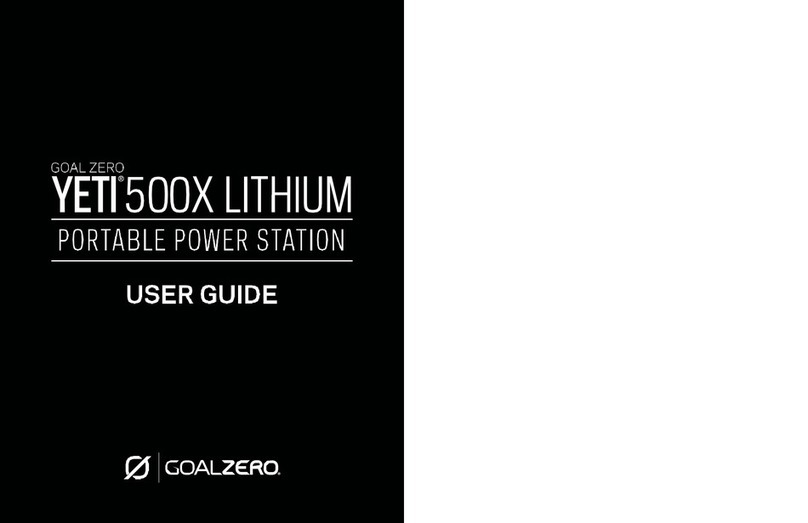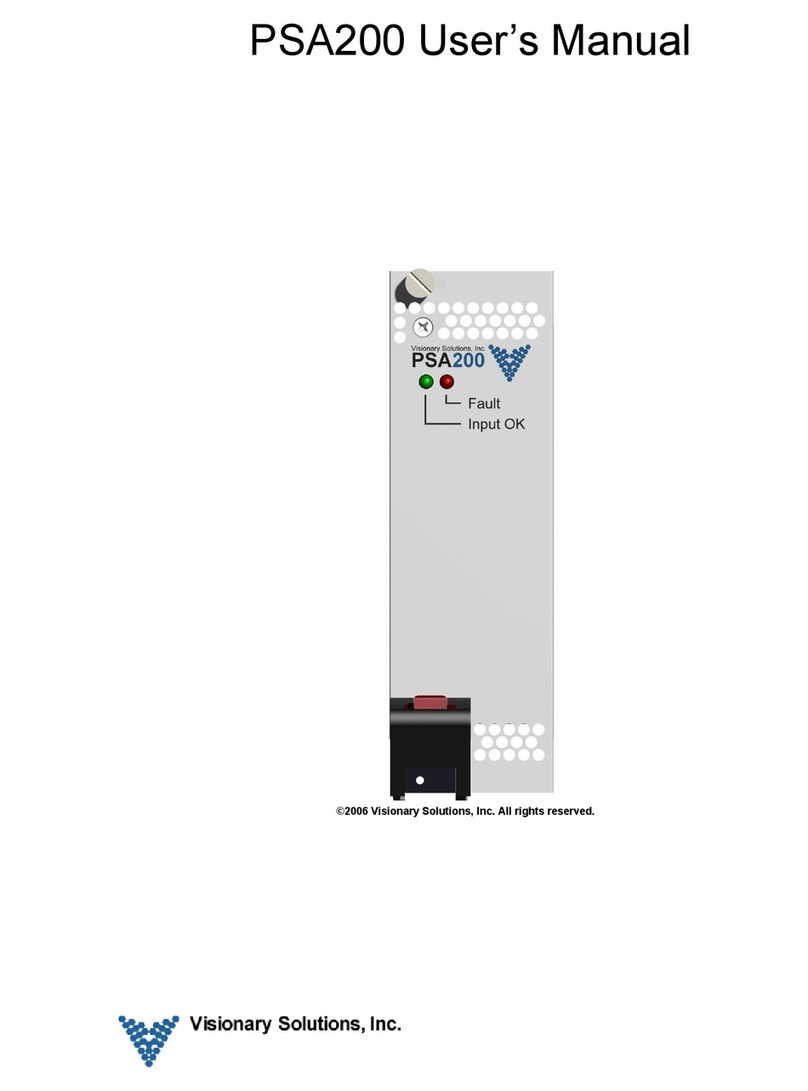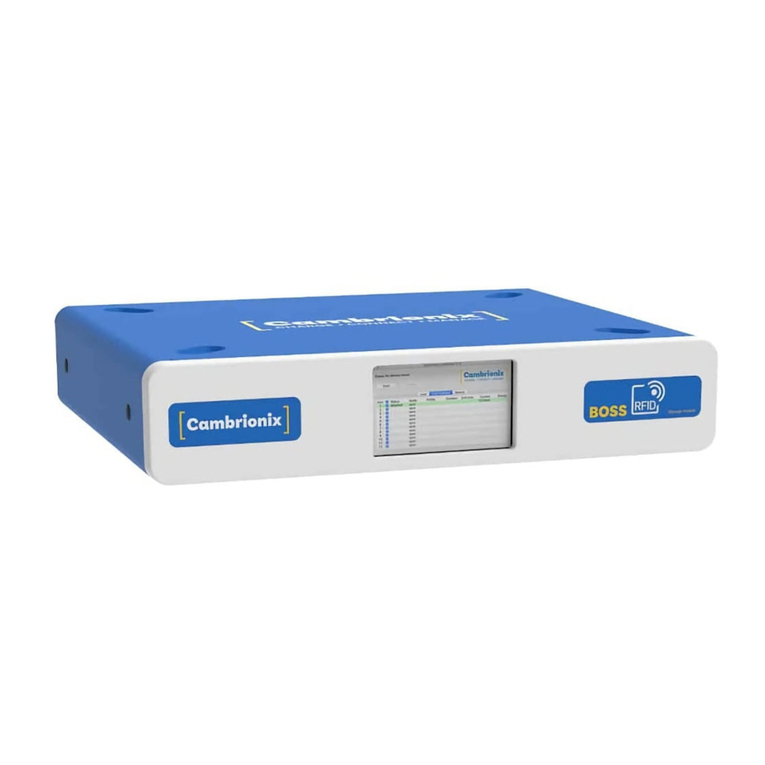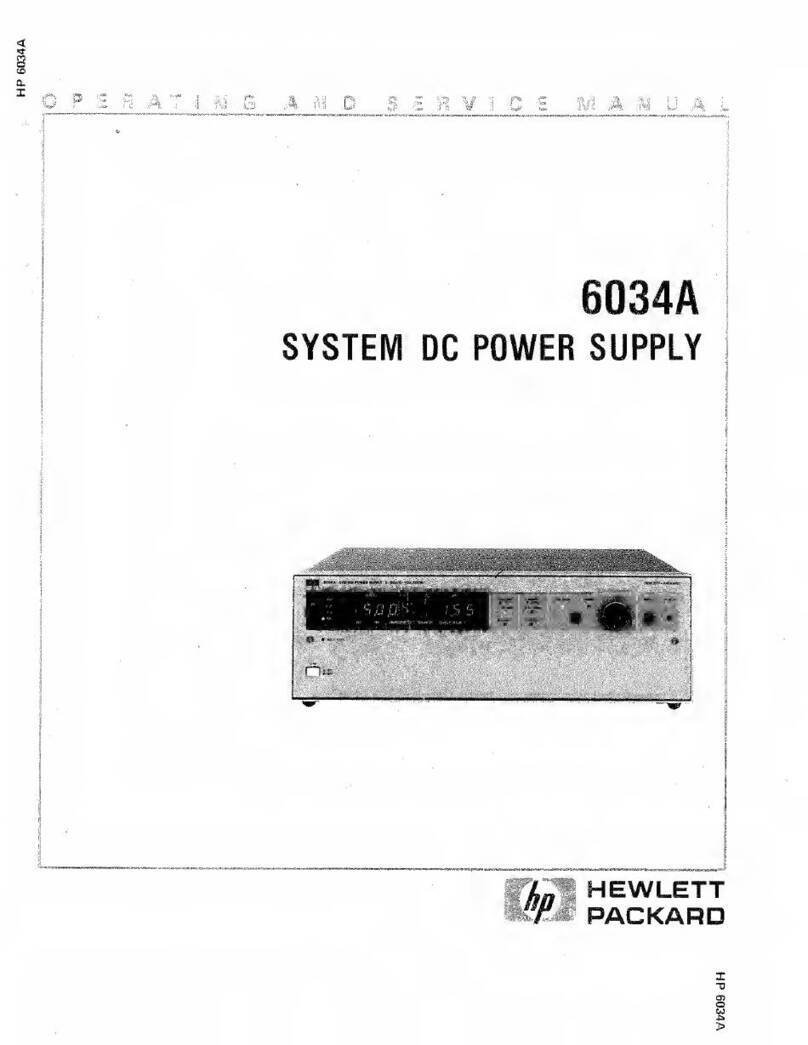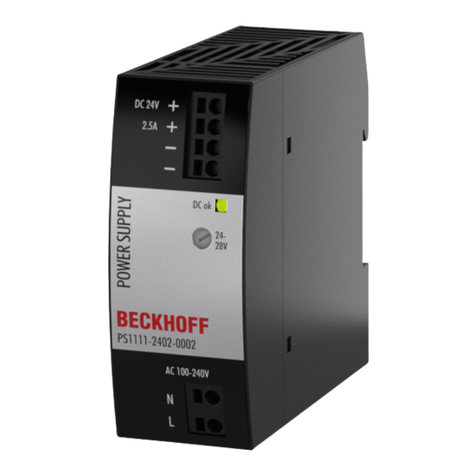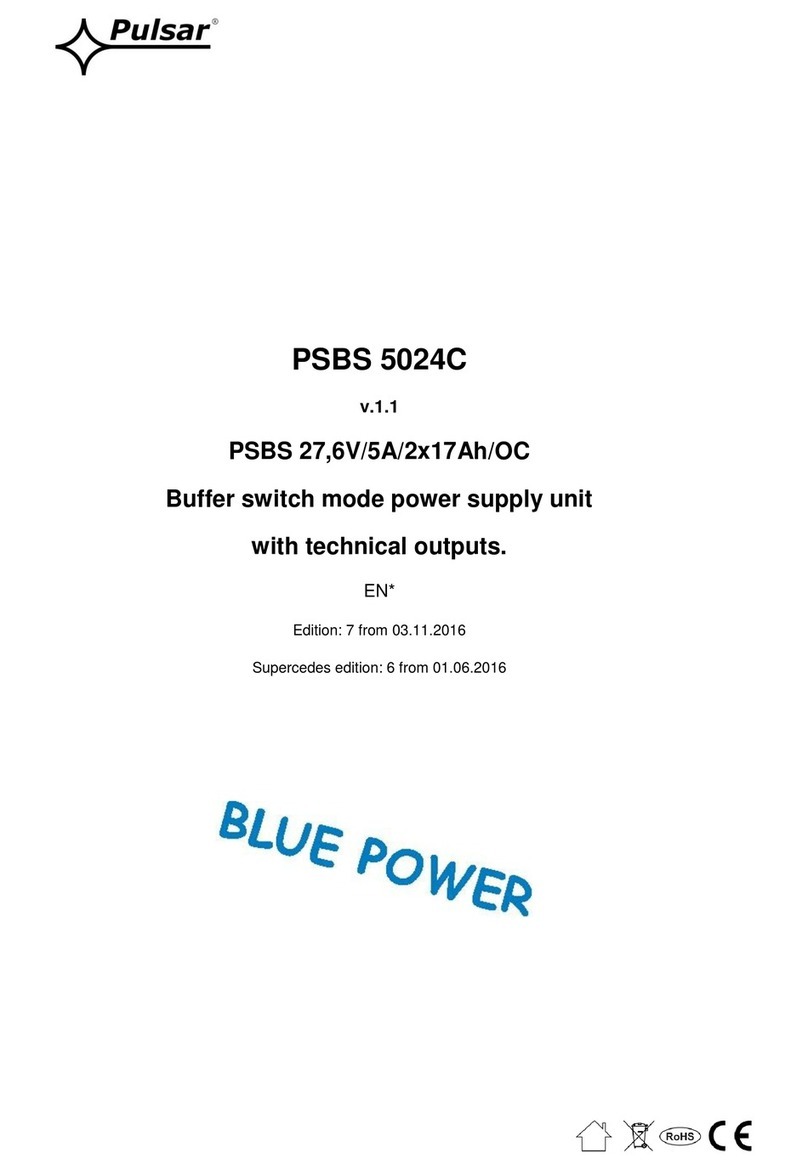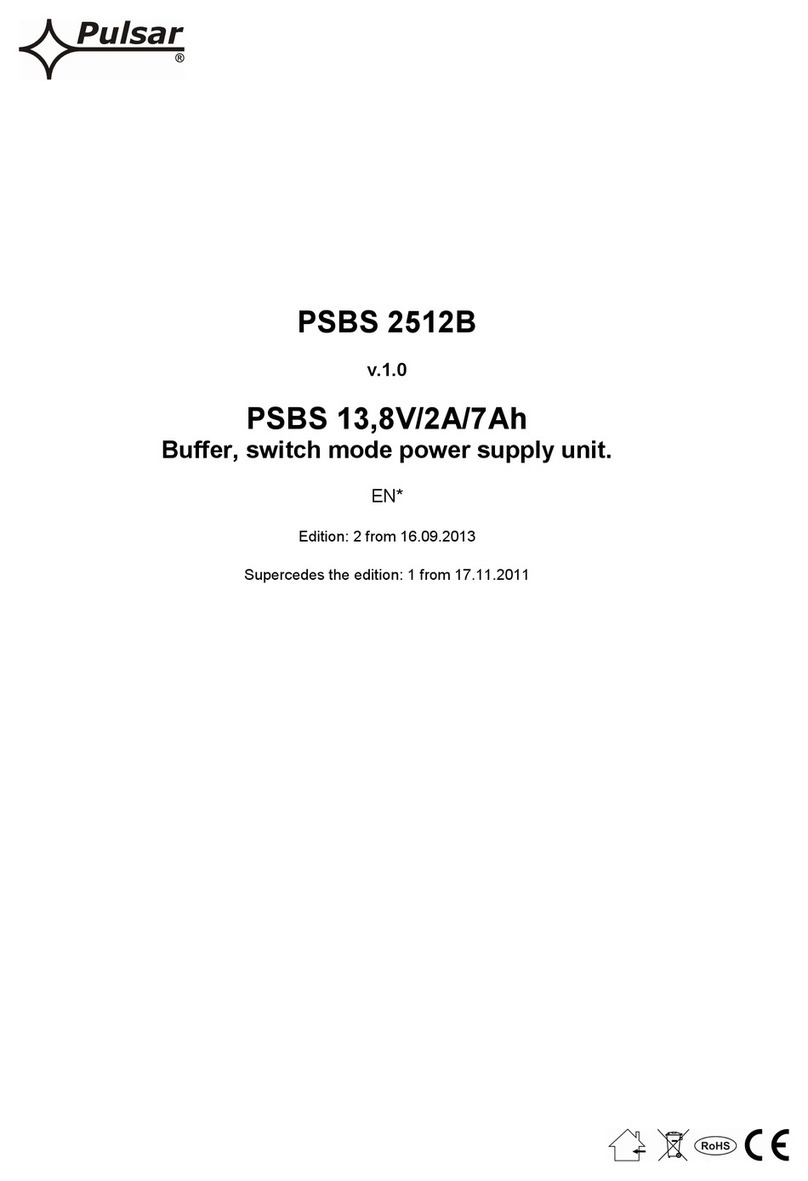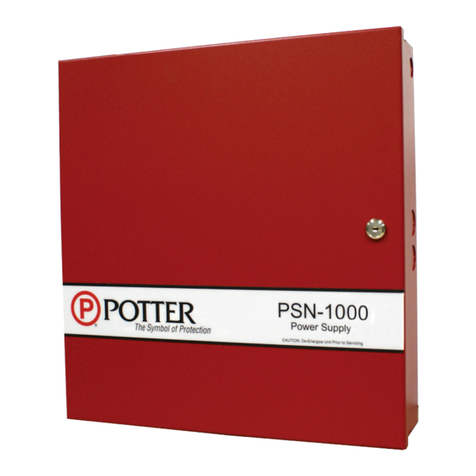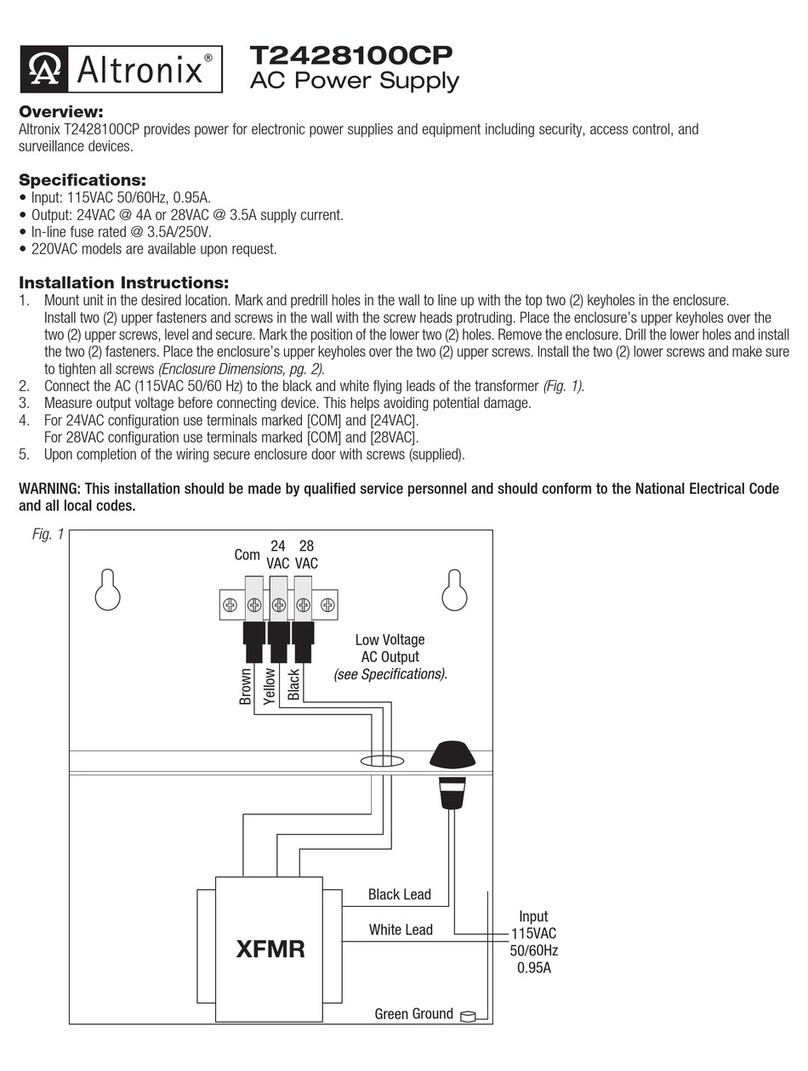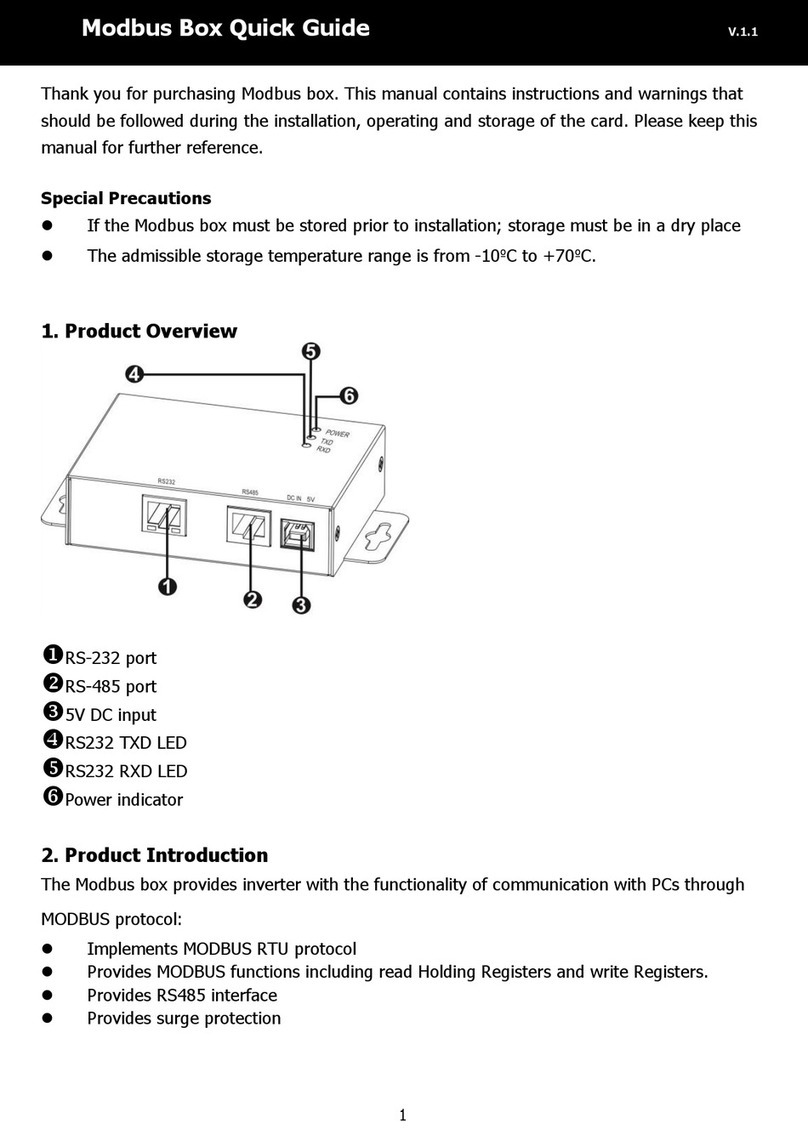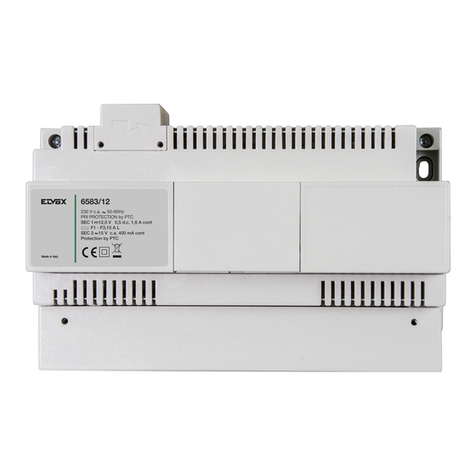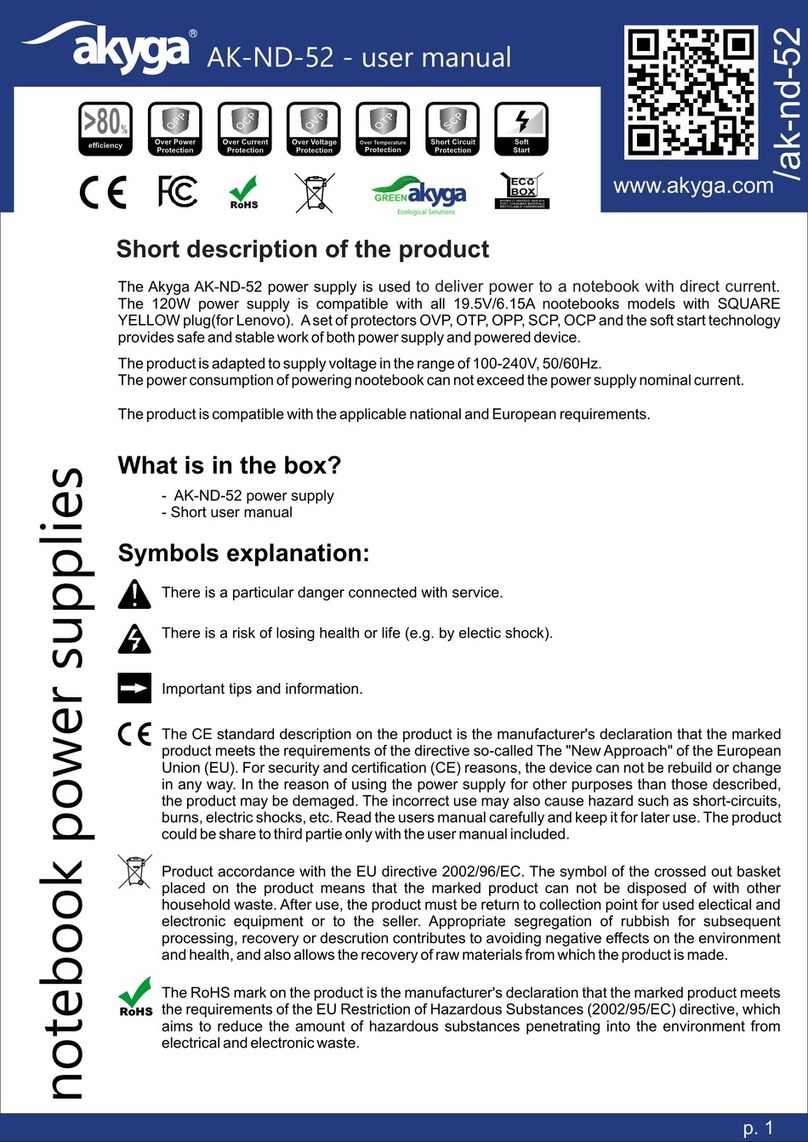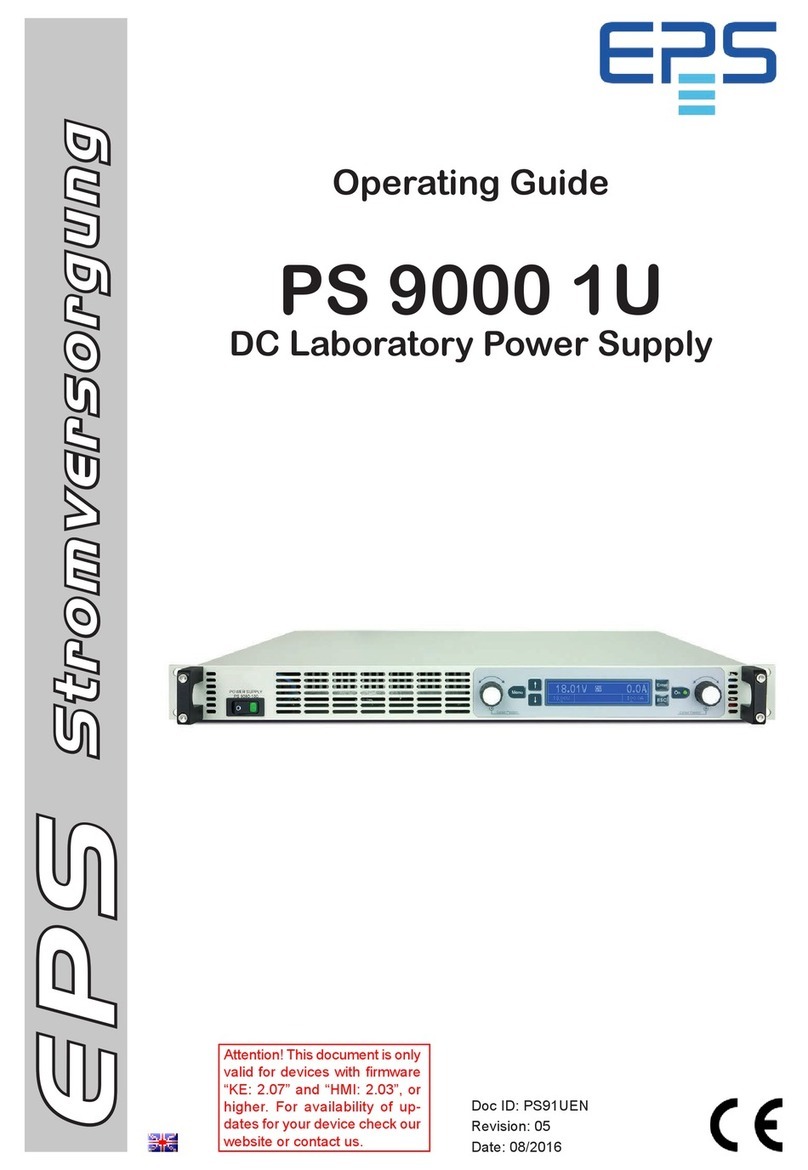GOAL ZERO YETI 1000X User manual

1

23
Before using or storing, plug your Goal Zero Yeti into the wall until it
is fully charged. Keep your Goal Zero Yeti plugged in when not in use
to ensure it is always ready. This will NOTcause harm to your battery.
For more tips and tricks on keeping your battery healthy, see the
BATTERIES 101 section.
CHARGE ME NOW

23
Before using or storing, plug your Goal Zero Yeti into the wall until it
is fully charged. Keep your Goal Zero Yeti plugged in when not in use
to ensure it is always ready. This will NOTcause harm to your battery.
For more tips and tricks on keeping your battery healthy, see the
BATTERIES 101 section.
CHARGE ME NOW

41
Table of Contents
Getting Started
i. Get to Know Your Gear 2
ii. How it Works
Charging Your Goal Zero Yeti 5
i. Charging from the Wall
ii. Charging from Solar
Using Your Goal Zero Yeti 7
i. How to use
ii. Best-Use Strategy
iii. Cold Weather Usage
iv. LCD Display
Storage and Downtime Maintenance 9
Technical Specifications 10
Frequently Asked Questions 12
Troubleshooting 14
Education 15
i. Batteries 101
ii. Solar 101
Warranty 17
Suomalainen 22
Nederlands 44
Svenska 66
Read all instructions and cautions carefully before use to avoid personal
injury or damage to the unit and any connected products
Observe all Input/Output connectors ratings: To avoid fire or electrical shock
hazard, observe all ratings on unit, and products you intend to use; check
manuals for more information.
Use in a ventilated area: Ensure proper ventilation while in use and do not
obstruct fan openings on unit. Inadequate ventilation may cause damage to
the unit. Do not stack anything on top of the unit in storage or in use.
Power supplies will get hot when in use: Keep your Yeti Power supply in a dry,
well ventilated area when in use. Do not keep the power supply under the lid
when in use.
DO NOT operate in wet conditions: In order to avoid short circuits or electric
shock do not allow unit to get wet. In the event the unit does get wet, let unit
dry completely before using.
Keep the unit clean and dry: Inspect the unit for dirt, dust, or moisture on a
regular basis.
Shock or Fire Hazard: This Yeti generates the same potentially lethal AC
power as a normal household wall outlet. Please use it carefully just like using
a normal AC outlet on the wall.
DO NOT insert foreign objects into outputs or ventilation holes.
DO NOT tamper with or attempt to replace your battery.
Any manipulation to the unit or its components will void all warranties.
IMPORTANT SAFETY INSTRUCTIONS

41
Table of Contents
Getting Started
i. Get to Know Your Gear 2
ii. How it Works
Charging Your Goal Zero Yeti 5
i. Charging from the Wall
ii. Charging from Solar
Using Your Goal Zero Yeti 7
i. How to use
ii. Best-Use Strategy
iii. Cold Weather Usage
iv. LCD Display
Storage and Downtime Maintenance 9
Technical Specifications 10
Frequently Asked Questions 12
Troubleshooting 14
Education 15
i. Batteries 101
ii. Solar 101
Warranty 17
Suomalainen 22
Nederlands 44
Svenska 66
Read all instructions and cautions carefully before use to avoid personal
injury or damage to the unit and any connected products
Observe all Input/Output connectors ratings: To avoid fire or electrical shock
hazard, observe all ratings on unit, and products you intend to use; check
manuals for more information.
Use in a ventilated area: Ensure proper ventilation while in use and do not
obstruct fan openings on unit. Inadequate ventilation may cause damage to
the unit. Do not stack anything on top of the unit in storage or in use.
Power supplies will get hot when in use: Keep your Yeti Power supply in a dry,
well ventilated area when in use. Do not keep the power supply under the lid
when in use.
DO NOT operate in wet conditions: In order to avoid short circuits or electric
shock do not allow unit to get wet. In the event the unit does get wet, let unit
dry completely before using.
Keep the unit clean and dry: Inspect the unit for dirt, dust, or moisture on a
regular basis.
Shock or Fire Hazard: This Yeti generates the same potentially lethal AC
power as a normal household wall outlet. Please use it carefully just like using
a normal AC outlet on the wall.
DO NOT insert foreign objects into outputs or ventilation holes.
DO NOT tamper with or attempt to replace your battery.
Any manipulation to the unit or its components will void all warranties.
IMPORTANT SAFETY INSTRUCTIONS

23
Get To Know Your Gear Get To Know Your Gear
8mm Input for Charging from Goal
Zero Solar Panels, or AC
Anderson Power Pole Input
for Charging from Goal Zero
Solar Panels, or AC
12V Outputs
USB 5V, up to 2.4A (12W)
USB-C 5-12V, 3A(18W)
USB-C Input/Output
Power Delivery
5-20V, up to 3A (60W)
Interactive Buttons
and LCD Screen
AC Outputs
INPUT 12V UNIT LIGHT INFO 120VAC
USB-A 5V, 2.4AIN/OUT
60W PD 18W QC
1500W, 3000W SURGE
INPUT
12V OUTPUT
8mm input 12V Output

23
Get To Know Your Gear Get To Know Your Gear
8mm Input for Charging from Goal
Zero Solar Panels, or AC
Anderson Power Pole Input
for Charging from Goal Zero
Solar Panels, or AC
12V Outputs
USB 5V, up to 2.4A (12W)
USB-C 5-12V, 3A(18W)
USB-C Input/Output
Power Delivery
5-20V, up to 3A (60W)
Interactive Buttons
and LCD Screen
AC Outputs
INPUT 12V UNIT LIGHT INFO 120VAC
USB-A 5V, 2.4AIN/OUT
60W PD 18W QC
1500W, 3000W SURGE
INPUT
12V OUTPUT
8mm input 12V Output

45
How it Works
+ MORE
CHARGE IT
WHAT IT POWERS
CHARGE ME NOW: Before using or storing, plug your Goal Zero Yeti into the wall until it
is fully charged. Keep your Goal Zero Yeti plugged in when not in use to ensure it is always
ready. This will NOT cause harm to your battery. For more tips and tricks on keeping your
battery healthy, see the BATTERIES 101 section.
When charging your Goal Zero Yeti, you will notice a battery segment blinking in the
display. This indicates the current charge status. Once your Goal Zero Yeti is fully
charged, all battery segments will be lit and remain solid. As long as there is more power
going into the Goal Zero Yeti than is being pulled from the output ports, the display will
also indicate the time until fully charged. This is an estimated time based on the power
input and output numbers at that moment; it will gradually adjust to a shorter or longer
time as the average charge or discharge rates fluctuate.
Charging from the Wall
Using the included 120W AC Wall Charger, plug your Goal Zero Yeti into any wall outlet.
You will know the Goal Zero Yeti is charging when the blue LED light next to the INPUT
port turns on, and battery segments in the BATTERY DISPLAY are blinking. The Goal
Zero Yeti is fully charged when all battery segments stop blinking and remain solid. The
Goal Zero Yeti should recharge from the wall in about 9 hours.
1. The AC wall adapter comes in two pieces. Connect the two pieces by plugging the
cable into the box.
2. The 120W AC Wall Charger with the 8mm DC barrel connector can be plugged into
the the front of the Yeti or under the lid.
3. You can only use one wall charger at a time. If you want to charge your Yeti faster, call
our solutions center or look at our fast charge options on goalzero.com.
Charging Your Goal Zero Yeti
NOTE: To charge from your 12V output in your vehicle, use our 12V Car Charging
Cable SKU 98079 ( sold separately).
9 Hours
AC Plug
(120W Power Supply)
6 Hours
(Based off max input)
200W of Solar
(Sold separately)
9 Hours
Car Charge Cable
(Sold separately)
2 Hours
600W Power Supply
(Sold separately)
90 Hours
11W LED
10 Hours
42” TV (4K, 100W)
18 Hours
Fridge (1400Wh Per Day)

45
How it Works
+ MORE
CHARGE IT
WHAT IT POWERS
CHARGE ME NOW: Before using or storing, plug your Goal Zero Yeti into the wall until it
is fully charged. Keep your Goal Zero Yeti plugged in when not in use to ensure it is always
ready. This will NOT cause harm to your battery. For more tips and tricks on keeping your
battery healthy, see the BATTERIES 101 section.
When charging your Goal Zero Yeti, you will notice a battery segment blinking in the
display. This indicates the current charge status. Once your Goal Zero Yeti is fully
charged, all battery segments will be lit and remain solid. As long as there is more power
going into the Goal Zero Yeti than is being pulled from the output ports, the display will
also indicate the time until fully charged. This is an estimated time based on the power
input and output numbers at that moment; it will gradually adjust to a shorter or longer
time as the average charge or discharge rates fluctuate.
Charging from the Wall
Using the included 120W AC Wall Charger, plug your Goal Zero Yeti into any wall outlet.
You will know the Goal Zero Yeti is charging when the blue LED light next to the INPUT
port turns on, and battery segments in the BATTERY DISPLAY are blinking. The Goal
Zero Yeti is fully charged when all battery segments stop blinking and remain solid. The
Goal Zero Yeti should recharge from the wall in about 9 hours.
1. The AC wall adapter comes in two pieces. Connect the two pieces by plugging the
cable into the box.
2. The 120W AC Wall Charger with the 8mm DC barrel connector can be plugged into
the the front of the Yeti or under the lid.
3. You can only use one wall charger at a time. If you want to charge your Yeti faster, call
our solutions center or look at our fast charge options on goalzero.com.
Charging Your Goal Zero Yeti
NOTE: To charge from your 12V output in your vehicle, use our 12V Car Charging
Cable SKU 98079 ( sold separately).
9 Hours
AC Plug
(120W Power Supply)
6 Hours
(Based off max input)
200W of Solar
(Sold separately)
9 Hours
Car Charge Cable
(Sold separately)
2 Hours
600W Power Supply
(Sold separately)
90 Hours
11W LED
10 Hours
42” TV (4K, 100W)
18 Hours
Fridge (1400Wh Per Day)

67
Charging from Solar
There are three different inputs you can use when charging your Goal Zero Yeti from
solar, two of which are located in the “INPUT” area on the left side of the Goal Zero Yeti
faceplate and a third one located inside the storage compartment under the top lid. One
of the front ports and the port inside the storage compartment are round 8mm ports
designed to be used with Goal Zero Solar Panels or wall charger. Each 8mm input port
can handle up to 150W. The High Power Port (HPP) is designed to be used with larger or
higher power solar panels and can handle 600W of power, which is the total capacity for
power across all input ports.
1. Place your solar panel where it will get as much direct sunlight as possible.
2. Insert the blue-ringed solar panel plug into one of the INPUTports, either on the front
of the Goal Zero Yeti or in the storage compartment under the top lid. You will know the
Goal Zero Yeti is charging when the blue LED light next to the INPUT port lights up, and
the battery segments in the BATTERYDISPLAY are blinking. The Goal Zero Yeti is fully
charged when all battery segments stop blinking and remain solid.
3. You can also connect the Goal Zero Yeti to solar panels using the HPP port and the
appropriate adapter (if necessary), next to the 8mm charging port.
4. You can chain multiple Goal Zero Solar Panels together to reduce solar recharge times.
Your Goal Zero Yeti is capable of taking in 150W of input through the 8mm ports and no
more than 600Wof solar through the HPP port.
IMPORTANT NOTE: When solar recharging yourGoal Zero Yeti, take note of the
voltages of the solar panels and do not exceed 50V. Individual solar panels, or
solar panels chained in series in excess of 50Vcannot be used with the Goal
Zero Yeti and can cause serious damage to the unit. For help on chaining solar
panels, call our Customer Solutions Center at 888-794-6250.
How to use your Goal Zero Yeti:
1. Press the power button located above each port you will be using. **When not
using certain ports, make sure to turn them off to conserve power.
2. You’ll know the port is turned on when the white LED light on the button is
illuminated.
3. Plug in your gear for power anywhere life takes you.
4. If possible, keep your Goal Zero Yeti plugged into a power source when not in use.
5. You can charge your Goal Zero Yeti, and run your gear at the same time.
Best-Use Strategy:
When charging gearwith your Goal Zero Yeti, take note of the BATTERYDISPLAY. If you plug in
devices that have a high power requirement (a large refrigerator), the charge level of yourGoal
Zero Yeti can drop very quickly andyou may not get exactly 1000Wh of capacity. Also, especially
when using the AC power output, the Goal Zero Yeti will be converting the energy from the DC
power of the battery to the AC power needed by your device. AlthoughyourGoal Zero Yeti has
a highly efficient inverter, there is still some energy lost in the conversion andyou will not get the
full rated capacity of the battery. Ifyou’re experiencing shorter runtimes, you may want to check
the device’s power requirements, seeTROUBLESHOOTING for help.
Using your Goal Zero Yeti
NOTE: If you are inputting into multiple ports, know that likely only one inputwill be able to
take power at a time due to differences in input voltage. In this scenario, the inputswill be
prioritized as follows: 1. Front HPP 2. Front 8mm 3. UnderThe Lid 8mm. Also, solar and AC
inputs will not be able to be combined. If you are inputting from both a solar panel and a wall
outlet, the Yeti will prioritize the inputs based on the sequence listed above with the HPP
port getting top priority.

67
Charging from Solar
There are three different inputs you can use when charging your Goal Zero Yeti from
solar, two of which are located in the “INPUT” area on the left side of the Goal Zero Yeti
faceplate and a third one located inside the storage compartment under the top lid. One
of the front ports and the port inside the storage compartment are round 8mm ports
designed to be used with Goal Zero Solar Panels or wall charger. Each 8mm input port
can handle up to 150W. The High Power Port (HPP) is designed to be used with larger or
higher power solar panels and can handle 600W of power, which is the total capacity for
power across all input ports.
1. Place your solar panel where it will get as much direct sunlight as possible.
2. Insert the blue-ringed solar panel plug into one of the INPUTports, either on the front
of the Goal Zero Yeti or in the storage compartment under the top lid. You will know the
Goal Zero Yeti is charging when the blue LED light next to the INPUT port lights up, and
the battery segments in the BATTERYDISPLAY are blinking. The Goal Zero Yeti is fully
charged when all battery segments stop blinking and remain solid.
3. You can also connect the Goal Zero Yeti to solar panels using the HPP port and the
appropriate adapter (if necessary), next to the 8mm charging port.
4. You can chain multiple Goal Zero Solar Panels together to reduce solar recharge times.
Your Goal Zero Yeti is capable of taking in 150W of input through the 8mm ports and no
more than 600Wof solar through the HPP port.
IMPORTANT NOTE: When solar recharging yourGoal Zero Yeti, take note of the
voltages of the solar panels and do not exceed 50V. Individual solar panels, or
solar panels chained in series in excess of 50Vcannot be used with the Goal
Zero Yeti and can cause serious damage to the unit. For help on chaining solar
panels, call our Customer Solutions Center at 888-794-6250.
How to use your Goal Zero Yeti:
1. Press the power button located above each port you will be using. **When not
using certain ports, make sure to turn them off to conserve power.
2. You’ll know the port is turned on when the white LED light on the button is
illuminated.
3. Plug in your gear for power anywhere life takes you.
4. If possible, keep your Goal Zero Yeti plugged into a power source when not in use.
5. You can charge your Goal Zero Yeti, and run your gear at the same time.
Best-Use Strategy:
When charging gearwith your Goal Zero Yeti, take note of the BATTERYDISPLAY. If you plug in
devices that have a high power requirement (a large refrigerator), the charge level of yourGoal
Zero Yeti can drop very quickly andyou may not get exactly 1000Wh of capacity. Also, especially
when using the AC power output, the Goal Zero Yeti will be converting the energy from the DC
power of the battery to the AC power needed by your device. AlthoughyourGoal Zero Yeti has
a highly efficient inverter, there is still some energy lost in the conversion andyou will not get the
full rated capacity of the battery. Ifyou’re experiencing shorter runtimes, you may want to check
the device’s power requirements, seeTROUBLESHOOTING for help.
Using your Goal Zero Yeti
NOTE: If you are inputting into multiple ports, know that likely only one inputwill be able to
take power at a time due to differences in input voltage. In this scenario, the inputswill be
prioritized as follows: 1. Front HPP 2. Front 8mm 3. UnderThe Lid 8mm. Also, solar and AC
inputs will not be able to be combined. If you are inputting from both a solar panel and a wall
outlet, the Yeti will prioritize the inputs based on the sequence listed above with the HPP
port getting top priority.

89
1. INPUT shows the amount of power (watts) going into the Goal Zero Yeti while
charging. If charging from solar, you’ll see the watts change as you reposition the panels
into/out of the sunlight.
2. OUTPUT shows the amount of power (watts) your devices are using while plugged
into the Goal Zero Yeti.
3. TIME TO EMPTY/FULL shows the amount of time before your Goal Zero Yeti is
completely charged or empty, depending on if the net amount of power going into the
Goal Zero Yeti is positive or negative.
4. BATTERYLEVEL shows 5 segments, approximating 20% - 40% - 60% - 80%
-100% capacity. As you use your Goal Zero Yeti, segments will disappear from the
display, indicating the remaining charge. When charging your Goal Zero Yeti you will
notice a battery segment blinking. This indicates the current charge status. Once your
Goal Zero Yeti is fully charged, all battery segments will be lit and remain solid. As long
as there is more power going into the Goal Zero Yeti than is being pulled from the output
ports, the display will also indicate the time until fully charged. This is an estimated time
based on the power input and output numbers at that time; it will adjust to a shorter or
longer time if the charge or discharge rates fluctuate. Note that when you first plug in a
LCD Display
The built-in LCD display indicates four
important things:
Cold Weather Usage:
Cold temperatures (below freezing) can impact the Goal Zero Yeti’s battery capacity. If
you’ll be out living off-grid in sub-zero conditions, we recommend keeping your Goal Zero
Yeti in an insulated cooler, connected to a power source (solar panels), and charging your
gear. The natural heat generated by the Goal Zero Yeti contained in an insulated cooler
will keep battery capacity at its highest. The Yeti will not allow charging below freezing
for safety reasons. The unit will show the thermometer icon and “COLD” as you approach
this temperature. In a pinch, turning on your AC inverter may help to warm your unit
quicker than it would naturally.
Storage and Downtime Maintenance
Having your Goal Zero Yeti connected to a power source, like a solar panel or wall plug,
between adventures or while in storage keeps its battery healthy and topped off. This
prolongs battery life and will ensure your Goal Zero Yeti is charged and ready to go all
day, every day.
If you can’t keep your Goal Zero Yeti plugged into a power source during storage,
fully-charge your Goal Zero Yeti every 3-6 months and store it in a cool, dry place. If
the Yeti has not been used for several months, it may require several charge cycles
to restore accurate results on the battery percent and time remaining values on the
screen. Failure to maintain your Goal Zero Yeti by following these steps can result in
battery damage which will void the product warranty.
power source, whether it’s a solar panel or a wall charger, the Yeti may take a moment to
detect and adjust its charge circuitry before it starts drawing power from the source.
Front Buttons:
Pressing the LIGHT button will turn the display backlight on and off.
Pressing the UNIT button will scroll through different output and power consumption
settings. Hold units + info to perform factory reset. this deletes wifi information and
configurations. Hold units to reset watt hour counter.
Pressing the light + info buttons simultaniously, this will show the number of cycles on
your battery pack in the input area of the display.

89
1. INPUT shows the amount of power (watts) going into the Goal Zero Yeti while
charging. If charging from solar, you’ll see the watts change as you reposition the panels
into/out of the sunlight.
2. OUTPUT shows the amount of power (watts) your devices are using while plugged
into the Goal Zero Yeti.
3. TIME TO EMPTY/FULL shows the amount of time before your Goal Zero Yeti is
completely charged or empty, depending on if the net amount of power going into the
Goal Zero Yeti is positive or negative.
4. BATTERYLEVEL shows 5 segments, approximating 20% - 40% - 60% - 80%
-100% capacity. As you use your Goal Zero Yeti, segments will disappear from the
display, indicating the remaining charge. When charging your Goal Zero Yeti you will
notice a battery segment blinking. This indicates the current charge status. Once your
Goal Zero Yeti is fully charged, all battery segments will be lit and remain solid. As long
as there is more power going into the Goal Zero Yeti than is being pulled from the output
ports, the display will also indicate the time until fully charged. This is an estimated time
based on the power input and output numbers at that time; it will adjust to a shorter or
longer time if the charge or discharge rates fluctuate. Note that when you first plug in a
LCD Display
The built-in LCD display indicates four
important things:
Cold Weather Usage:
Cold temperatures (below freezing) can impact the Goal Zero Yeti’s battery capacity. If
you’ll be out living off-grid in sub-zero conditions, we recommend keeping your Goal Zero
Yeti in an insulated cooler, connected to a power source (solar panels), and charging your
gear. The natural heat generated by the Goal Zero Yeti contained in an insulated cooler
will keep battery capacity at its highest. The Yeti will not allow charging below freezing
for safety reasons. The unit will show the thermometer icon and “COLD” as you approach
this temperature. In a pinch, turning on your AC inverter may help to warm your unit
quicker than it would naturally.
Storage and Downtime Maintenance
Having your Goal Zero Yeti connected to a power source, like a solar panel or wall plug,
between adventures or while in storage keeps its battery healthy and topped off. This
prolongs battery life and will ensure your Goal Zero Yeti is charged and ready to go all
day, every day.
If you can’t keep your Goal Zero Yeti plugged into a power source during storage,
fully-charge your Goal Zero Yeti every 3-6 months and store it in a cool, dry place. If
the Yeti has not been used for several months, it may require several charge cycles
to restore accurate results on the battery percent and time remaining values on the
screen. Failure to maintain your Goal Zero Yeti by following these steps can result in
battery damage which will void the product warranty.
power source, whether it’s a solar panel or a wall charger, the Yeti may take a moment to
detect and adjust its charge circuitry before it starts drawing power from the source.
Front Buttons:
Pressing the LIGHT button will turn the display backlight on and off.
Pressing the UNIT button will scroll through different output and power consumption
settings. Hold units + info to perform factory reset. this deletes wifi information and
configurations. Hold units to reset watt hour counter.
Pressing the light + info buttons simultaniously, this will show the number of cycles on
your battery pack in the input area of the display.

10 11
Charge times:
Wall Charger (120W) 9 hrs
Car Charger (120W) 9 hrs
Goal Zero Boulder 50 24-48 hrs
Goal Zero Boulder 100 12-24 hrs
Goal Zero Boulder 200 briefcase 6-12 hrs
Battery:
Cell Chemistry Li-ion NMC
Pack Capacity 983Wh (10.8V, 91Ah)
Single Cell Equivalent Capacity 273Ah @ 3.6V
Lifecycles 500 Cycles to 80% capacity (Discharge rate: 1C, Full
charge/discharge, Temp: 25C)
Shelf-life Charge every 3-6 months
Management System MPPT charge controller
Ports:
USB-A Ports (output) 5V, up to 2.4A (12W max), regulated
USB-C Port (output) 5 - 12V, up to 3.0A (18W max), regulated
USB-PD Port (input/output) 5 - 20V, up to 3.0A (60W max), regulated
6mm Port (output, 6mm) 12V, up to 10A (120W max), regulated
12V Car Port (output) 12V, up to 15A (180W max), regulated
12V High Power Por HPP (output) 12V, up to 15A (180W max), regulated
120V AC Inverter (output, pure sine wave) 120VAC 60Hz, 12.5A (1500W, 3000W surge)
230V AC Inverter (output, pure sine wave)
UNIVERSAL OR AUSTRALIA TYPE AC PLUGS
230VAC 50Hz, 6.5A (1500W, 3000W surge)
Charging Port (input, 8mm) 14-50V, up to 10A (150W max)
High Power Port HPP (input) 14-50V, up to 50A (600W max)
Expansion Module port Covered port under the lid. To be used with Goal Zero
expansion modules only.
General:
Weight 31.68 lbs (14.37 kg)
Dimensions 15.25 x 10.23 x 9.86 in (38.74 x 25.98 x 25.04 cm)
Operating Usage Temp. 32-104 F (0-40 C)
Certs
Warranty 24 months
Technical Specifications Technical Specifications

10 11
Charge times:
Wall Charger (120W) 9 hrs
Car Charger (120W) 9 hrs
Goal Zero Boulder 50 24-48 hrs
Goal Zero Boulder 100 12-24 hrs
Goal Zero Boulder 200 briefcase 6-12 hrs
Battery:
Cell Chemistry Li-ion NMC
Pack Capacity 983Wh (10.8V, 91Ah)
Single Cell Equivalent Capacity 273Ah @ 3.6V
Lifecycles 500 Cycles to 80% capacity (Discharge rate: 1C, Full
charge/discharge, Temp: 25C)
Shelf-life Charge every 3-6 months
Management System MPPT charge controller
Ports:
USB-A Ports (output) 5V, up to 2.4A (12W max), regulated
USB-C Port (output) 5 - 12V, up to 3.0A (18W max), regulated
USB-PD Port (input/output) 5 - 20V, up to 3.0A (60W max), regulated
6mm Port (output, 6mm) 12V, up to 10A (120W max), regulated
12V Car Port (output) 12V, up to 15A (180W max), regulated
12V High Power Por HPP (output) 12V, up to 15A (180W max), regulated
120V AC Inverter (output, pure sine wave) 120VAC 60Hz, 12.5A (1500W, 3000W surge)
230V AC Inverter (output, pure sine wave)
UNIVERSAL OR AUSTRALIA TYPE AC PLUGS
230VAC 50Hz, 6.5A (1500W, 3000W surge)
Charging Port (input, 8mm) 14-50V, up to 10A (150W max)
High Power Port HPP (input) 14-50V, up to 50A (600W max)
Expansion Module port Covered port under the lid. To be used with Goal Zero
expansion modules only.
General:
Weight 31.68 lbs (14.37 kg)
Dimensions 15.25 x 10.23 x 9.86 in (38.74 x 25.98 x 25.04 cm)
Operating Usage Temp. 32-104 F (0-40 C)
Certs
Warranty 24 months
Technical Specifications Technical Specifications

12 13
Frequently Asked Questions
How do I reset my unit?
If you are experiencing issues the first step is the try a reset of your unit. To perform
a reset, press and hold the info and units buttons at the same time for 5 seconds. You
will see the screen flash off and then come back on after a successful reset. See if
this resolved the issue you are experiencing.
My yeti is not responding or is exhibiting odd behavior what should I do?
Try resetting the unit by holding the Units and Info button for 3 seconds to reset your
Yeti. Check your Yeti to see if the issue is resolved after the reset.
My new Yeti does not initially charge to 100%, it only charges to 95% what’s going
on?
Cycle the battery a few times and the issue should resolve itself as the yeti dials in its
charge parameters.
Are there faster ways to recharge my Yeti?
Yes, check out our full list of charging options at Goalzero.com. Here we have options
for fast charging as well as vehicle integration.
What does the snowflake icon and the thermometer icon mean?
If your yeti displays the thermometer icon and a warning of HOT or COLD, this means
you are either approaching or have exceeded the temperature thresholds of the
Yeti. A warning of “cold” means you will need to warm the yeti in order to resume full
functionality while “hot” means you need to cool the unit.
have my Yeti connected to a charger but it is at 95% and not charging, what is
going on?
In order to get the most life out of your battery we make sure to not stress the
battery pack at the full state of charge. The battery will charge to 100% and then
stop, self-discharge over time to 98% before the charge will engage again. If you are
wanting to make sure your Yeti is completely topped off for upcoming use, unplugging
and then re-plugging in your input cable should reengage the input and start the charge
again
My old Yeti accessory or charger is not working with my new Yeti X, should it be
working?
Some of the smaller power supplies and legacy chargers will not work with the new
Yeti X. For a full list of compatible charger and accessories for your product please vist
www.gz.com/accessories.
Can I use my 3rd party panels with my Yeti
Yes, you can, so long as you stay under 50V. If using multiple 3rd party panels, be
careful! Chaining 3rd party panels together can be dangerous if done in the wrong way
so visit our website www.goalzero.com/serissparallel to learn how to safely combine
panels.
Can I chain multiple goal Zero panels into a Yeti X?
Yes, our panels are designed to be safely chained together out of the box and eliminate
the risks associated with 3rd party panels. You may need to pickup a 4 to 1 adapter
cable to chain certain Goal Zero Solar panels together.
Can I charge my Yeti and my devices simultaneously?
Yes, you can use your devices and charge youre Yeti at the same time.

12 13
Frequently Asked Questions
How do I reset my unit?
If you are experiencing issues the first step is the try a reset of your unit. To perform
a reset, press and hold the info and units buttons at the same time for 5 seconds. You
will see the screen flash off and then come back on after a successful reset. See if
this resolved the issue you are experiencing.
My yeti is not responding or is exhibiting odd behavior what should I do?
Try resetting the unit by holding the Units and Info button for 3 seconds to reset your
Yeti. Check your Yeti to see if the issue is resolved after the reset.
My new Yeti does not initially charge to 100%, it only charges to 95% what’s going
on?
Cycle the battery a few times and the issue should resolve itself as the yeti dials in its
charge parameters.
Are there faster ways to recharge my Yeti?
Yes, check out our full list of charging options at Goalzero.com. Here we have options
for fast charging as well as vehicle integration.
What does the snowflake icon and the thermometer icon mean?
If your yeti displays the thermometer icon and a warning of HOT or COLD, this means
you are either approaching or have exceeded the temperature thresholds of the
Yeti. A warning of “cold” means you will need to warm the yeti in order to resume full
functionality while “hot” means you need to cool the unit.
have my Yeti connected to a charger but it is at 95% and not charging, what is
going on?
In order to get the most life out of your battery we make sure to not stress the
battery pack at the full state of charge. The battery will charge to 100% and then
stop, self-discharge over time to 98% before the charge will engage again. If you are
wanting to make sure your Yeti is completely topped off for upcoming use, unplugging
and then re-plugging in your input cable should reengage the input and start the charge
again
My old Yeti accessory or charger is not working with my new Yeti X, should it be
working?
Some of the smaller power supplies and legacy chargers will not work with the new
Yeti X. For a full list of compatible charger and accessories for your product please vist
www.gz.com/accessories.
Can I use my 3rd party panels with my Yeti
Yes, you can, so long as you stay under 50V. If using multiple 3rd party panels, be
careful! Chaining 3rd party panels together can be dangerous if done in the wrong way
so visit our website www.goalzero.com/serissparallel to learn how to safely combine
panels.
Can I chain multiple goal Zero panels into a Yeti X?
Yes, our panels are designed to be safely chained together out of the box and eliminate
the risks associated with 3rd party panels. You may need to pickup a 4 to 1 adapter
cable to chain certain Goal Zero Solar panels together.
Can I charge my Yeti and my devices simultaneously?
Yes, you can use your devices and charge youre Yeti at the same time.

14 15
How do I know if my Goal Zero Yeti is charged?
To check the charge level of your Goal Zero Yeti, refer to the Battery Display. When lit up,
you’ll see a battery outline with 5 segments, indicating the current charge level. It is OK to
use your Goal Zero Yeti even when it’s not fully charged.
How do I know if my device will work with the Goal Zero Yeti ?
First, you’ll need to determine the amount of power your device requires. This may require
some research on your end, a good internet search or examining the user guide for your
device should suffice.
Second, you will need to check the capacity for the individual output ports. For example,
the Goal Zero Yeti’s AC port is powered by an inverter that allows for 1500W of power.
This means if your device is pulling more than 1500W for an extended period of time, the
Goal Zero Yeti’s inverter will shut off. Another number to watch for is the surge rating of
your device as compared to that of the port. The Goal Zero Yeti inverter has an advanced
surge management system that will maximize its compatibility with various devices, but
there will still be items that will surge at a higher rate, and for a longer time, than the Goal
Zero Yeti can manage, in which case the port will turn itself off.
Finally, once you know your device is compatible, you’ll want to determine how long you’ll be
able to power your gear from the Goal Zero Yeti. Here’s a quick and dirty lesson in power.
All GOAL ZERO Power Banks and Portable Power Stations have a number in their name,
ex. Guide10 Plus recharger, Goal Zero Yeti 1000X. These numbers refer to the Watt Hours
(Wh), or the amount of energy that can be stored in each recharger, and how you’ll know if
your gear is compatible with each recharger. For example, a 200Wh power station should
run a 100W light for 2 hours (200/100=2). If your gear falls within the 1000Wh capacity
of the Goal Zero Yeti, you’ll want to check the restrictions on each of the output ports.
Another factor in the math is how much power is being converted going from the Goal
Zero Yeti battery to the device you are powering/charging. In some situations, like
when running a 12V device, such as the LAL 350, directly off the 12V port, there will
minimal conversion and thus very little additional losses. In using the USB ports to
charge a phone, you add a layer of conversion (12V battery in the Goal Zero Yeti is being
converted to a 5V USB output), which introduces around 10% of losses. When using the
inverter, there are two layers of conversion (12V to high voltage, DC to AC). The least
efficient way of using the battery in the Goal Zero Yeti is to use an AC-DC adapter off the
AC ports, as is the case if you use a phone wall charger to charge your phone, as it adds
yet another layer of conversion in the wall adapter.
So when you’re deciding on what to power from your new GOAL ZERO recharger, do
some research into your device’s watt consumption. For more quick tips and learning
tools, check out www.GoalZero.com/learn.html

14 15
How do I know if my Goal Zero Yeti is charged?
To check the charge level of your Goal Zero Yeti, refer to the Battery Display. When lit up,
you’ll see a battery outline with 5 segments, indicating the current charge level. It is OK to
use your Goal Zero Yeti even when it’s not fully charged.
How do I know if my device will work with the Goal Zero Yeti ?
First, you’ll need to determine the amount of power your device requires. This may require
some research on your end, a good internet search or examining the user guide for your
device should suffice.
Second, you will need to check the capacity for the individual output ports. For example,
the Goal Zero Yeti’s AC port is powered by an inverter that allows for 1500W of power.
This means if your device is pulling more than 1500W for an extended period of time, the
Goal Zero Yeti’s inverter will shut off. Another number to watch for is the surge rating of
your device as compared to that of the port. The Goal Zero Yeti inverter has an advanced
surge management system that will maximize its compatibility with various devices, but
there will still be items that will surge at a higher rate, and for a longer time, than the Goal
Zero Yeti can manage, in which case the port will turn itself off.
Finally, once you know your device is compatible, you’ll want to determine how long you’ll be
able to power your gear from the Goal Zero Yeti. Here’s a quick and dirty lesson in power.
All GOAL ZERO Power Banks and Portable Power Stations have a number in their name,
ex. Guide10 Plus recharger, Goal Zero Yeti 1000X. These numbers refer to the Watt Hours
(Wh), or the amount of energy that can be stored in each recharger, and how you’ll know if
your gear is compatible with each recharger. For example, a 200Wh power station should
run a 100W light for 2 hours (200/100=2). If your gear falls within the 1000Wh capacity
of the Goal Zero Yeti, you’ll want to check the restrictions on each of the output ports.
Another factor in the math is how much power is being converted going from the Goal
Zero Yeti battery to the device you are powering/charging. In some situations, like
when running a 12V device, such as the LAL 350, directly off the 12V port, there will
minimal conversion and thus very little additional losses. In using the USB ports to
charge a phone, you add a layer of conversion (12V battery in the Goal Zero Yeti is being
converted to a 5V USB output), which introduces around 10% of losses. When using the
inverter, there are two layers of conversion (12V to high voltage, DC to AC). The least
efficient way of using the battery in the Goal Zero Yeti is to use an AC-DC adapter off the
AC ports, as is the case if you use a phone wall charger to charge your phone, as it adds
yet another layer of conversion in the wall adapter.
So when you’re deciding on what to power from your new GOAL ZERO recharger, do
some research into your device’s watt consumption. For more quick tips and learning
tools, check out www.GoalZero.com/learn.html

16 17
If your devices are not recharging from your Goal Zero Yeti, follow these steps:
1. Ensure the Output Port has been turned on. The white LED light on the power button
should be lit up.
a. If any of the lights have turned red, this indicates a trip. Push the button again to reset
it. The light will turn white when it is successfully reset.
2. Check the Battery Display. If it is at 20% or below, charge your Goal Zero Yeti.
3. Check the LCD Display for warning icons:
OVERLOAD: Power draw exceeds port’s maximum allowance. Indicated by red light in
the port’s button.
4. Verify your device is suitable for use with the Goal Zero Yeti:
a. All of the Goal Zero Yeti output ports have their own max power capacity. Check the
Goal Zero Yeti’s Tech Specs to ensure your device is compatible.
5. If you are still experiencing trouble with your Goal Zero Yeti, please call our Customer
Troubleshooting
HOT - unit is to hot to
safely function. Allow unit
to cool and try again.
COLD - unit is to Cold to
safely function. Allow unit
to warm and try again.
Battery requires attention.
Contact customer support.
1-888-794-6250
Education
BATTERIES 101: GOAL ZERO utilizes the latest and greatest in battery technology to
accompany you on all life’s adventures. From the versatile and lightweight Lithuim Ion, to
the robust and powerful Lead Acid, we’ve compiled some helpful tips to keep your GOAL
ZERO batteries working their best.
i. Batteries need exercise.
The best thing for any battery is to use it. Don’t leave the battery sitting without being
charged for extended periods of time. If you will be storing the Goal Zero Yeti without a
charger, make sure it’s fully charged before you put it away.
ii. The “Battery Memory” myth.
Thanks to old Nickel-Cadmium (NiCd) batteries, there’s a myth running around that you
should completely drain your batteries before plugging them in for a recharge, called “deep
cycling”. Although true with NiCd batteries, the typical batteries you’ll find in most of your
gear today, including the advanced lithium and lead-acid batteries used in your GOAL ZERO
rechargers, require no such draining. In fact, you should avoid deep cycling your batteries – it
does more harm than good in most cases.
iii. The “Stadium Effect”.
The stadium effect occurs when recharging your batteries. You’ll notice your battery quickly
filling up in the beginning, then slowing down noticeably when trying to charge up the last
several percentages. Think of how quickly a stadium fills up when the doors first open – there
are hundreds of open seats so it’s easy to find the one you want. Eventually there are only
a few open seats here and there and people have to maneuver around to find the spot they
want and filling those seats takes longer. The same theory applies to recharging batteries.
It’s easy for energy to flow in and take up empty space in the beginning, and as time goes on
and there is less space available, it takes longer for the energy to fill in the holes.
iv. Read the manual.
Yeah, it might be a long read, but the manual is the best place to find the dos and don’ts for
the battery in your specific device. Reading your manual will ensure you’re taking steps to
keep your batteries happy and healthy.
Other manuals for YETI 1000X
1
Table of contents
Other GOAL ZERO Power Supply manuals
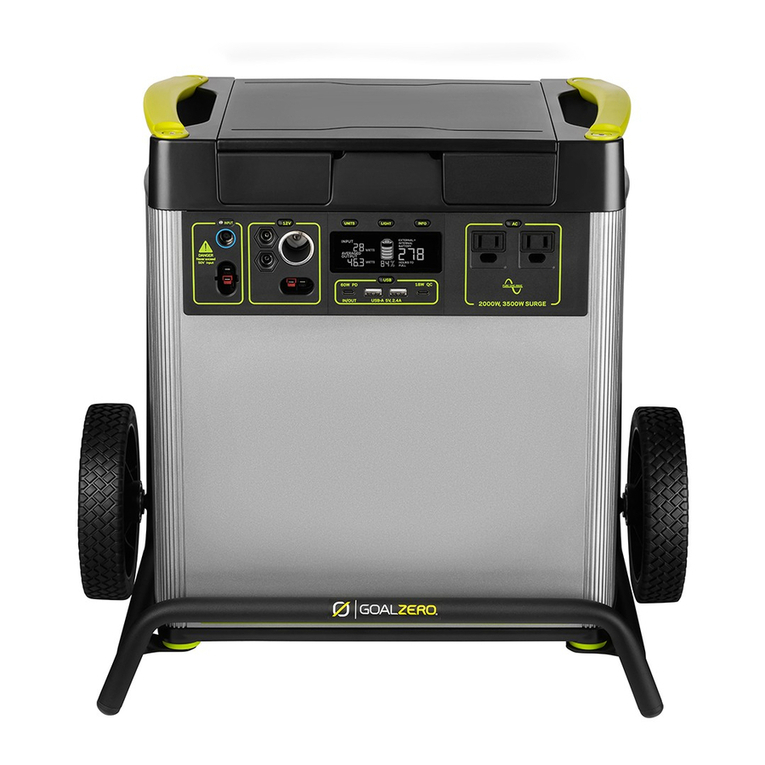
GOAL ZERO
GOAL ZERO Yeti 6000X User manual

GOAL ZERO
GOAL ZERO Yeti 1400 User manual

GOAL ZERO
GOAL ZERO YETI200X User manual

GOAL ZERO
GOAL ZERO YETI 300 User manual
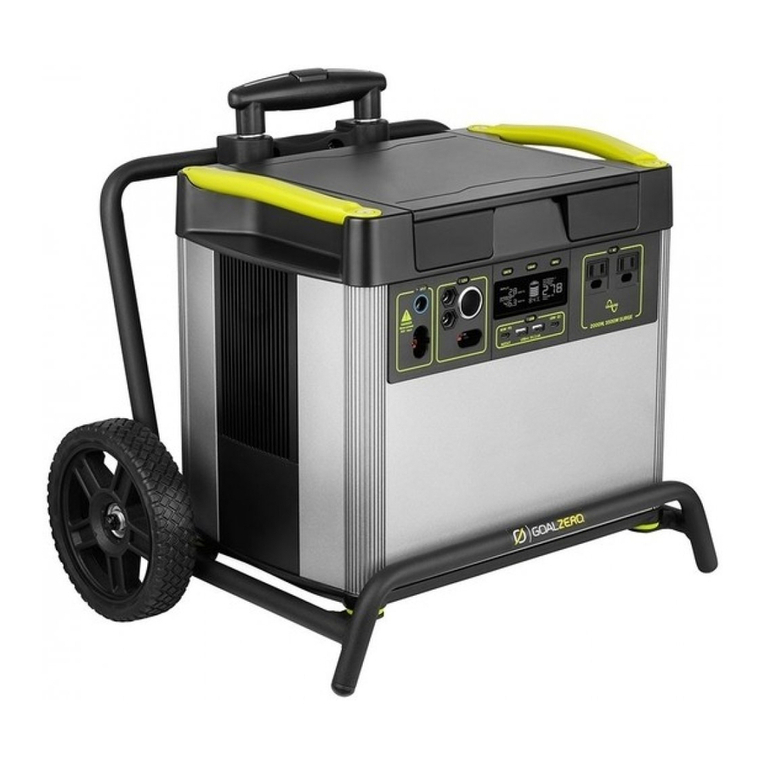
GOAL ZERO
GOAL ZERO Yeti 3000X User manual
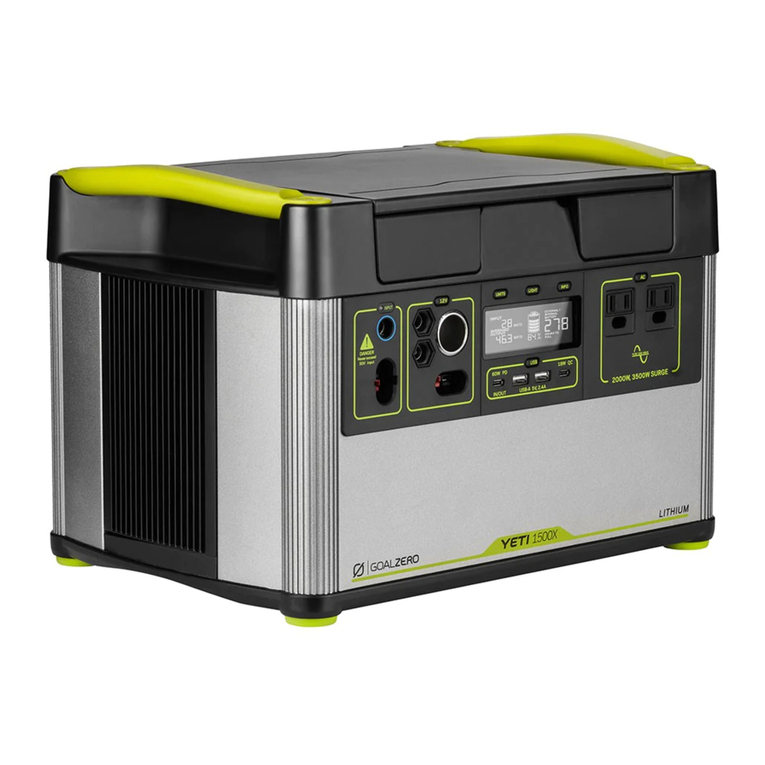
GOAL ZERO
GOAL ZERO YETI 1500X User manual
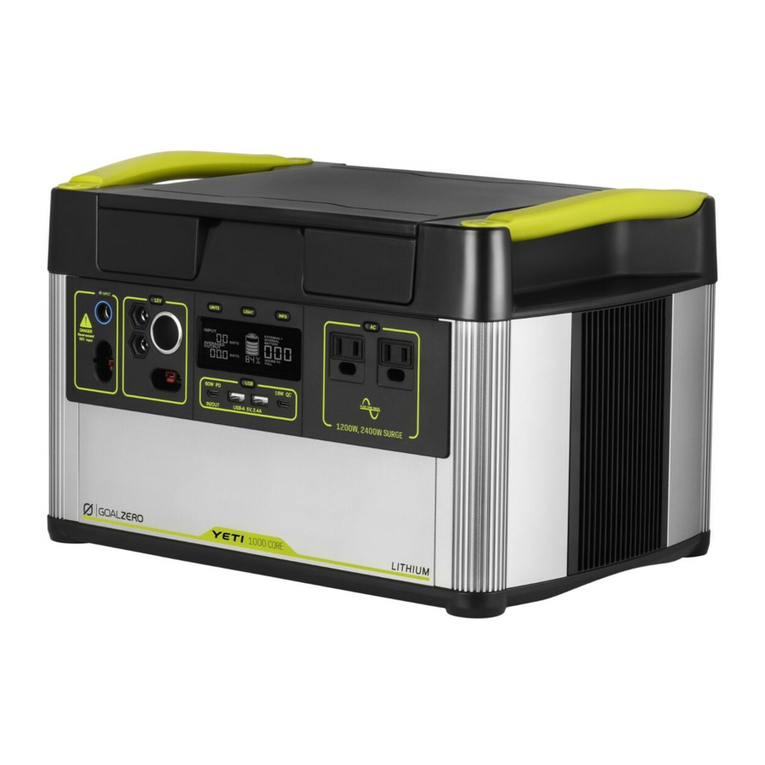
GOAL ZERO
GOAL ZERO Yeti 1000 Core User manual
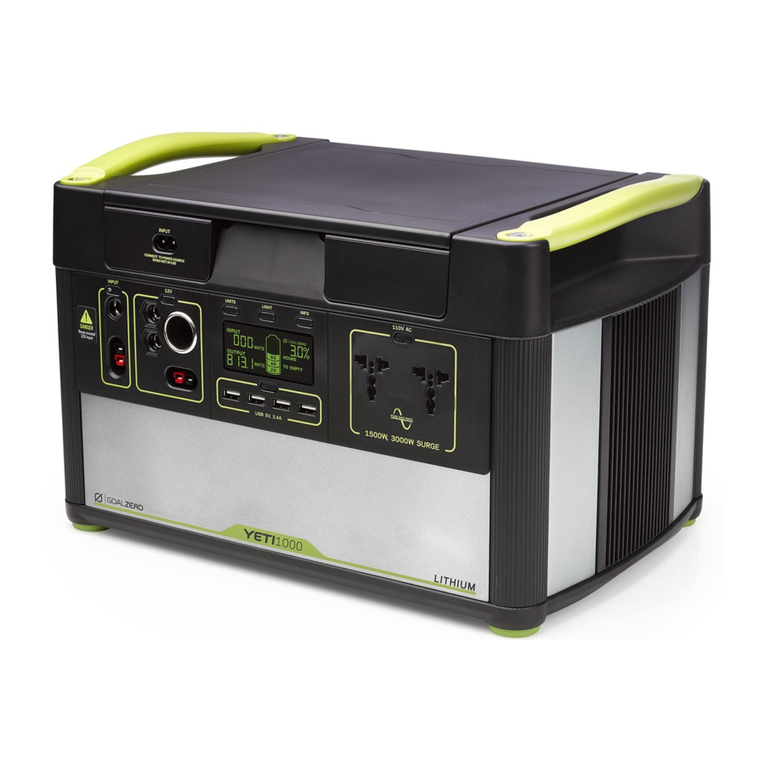
GOAL ZERO
GOAL ZERO Yeti 1000 User manual

GOAL ZERO
GOAL ZERO YETI PRO 4000 User manual
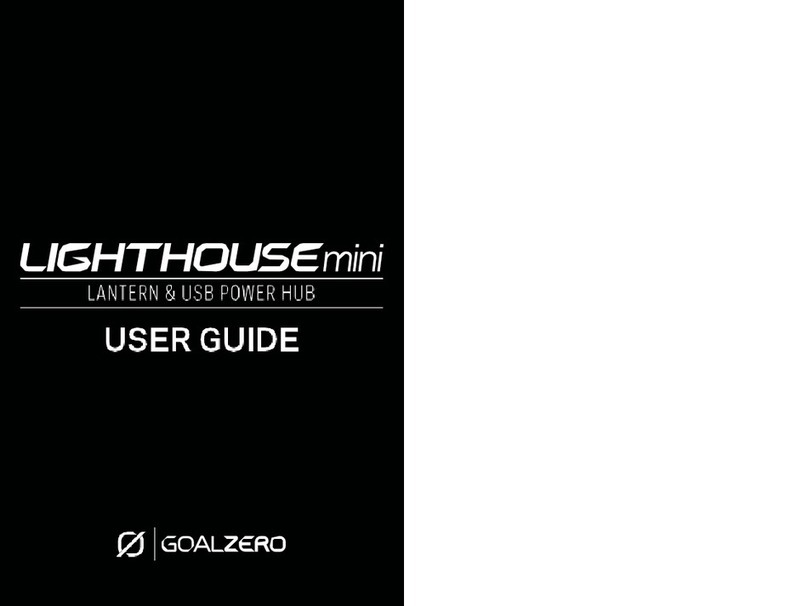
GOAL ZERO
GOAL ZERO Lighthouse mini User manual
